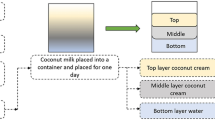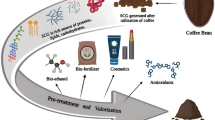Abstract
Canola-quality Indian mustard (Brassica juncea) is being developed as a complimentary oilseed crop to canola (Brassica napus) for cultivation in hot and low-rainfall areas, where canola does not perform well. In Australia, several B. juncea breeding lines have been developed for commercial cultivation and for eventual processing as canola oil. However, there still are significant species-based differences in the fatty acid composition with B. juncea containing lower levels of linoleic acid and higher levels of oleic and linolenic acids compared with B. napus. This has raised concern about possible oxidative stability differences between the oils. Oils (unrefined) extracted from different breeding lines of each species were subjected to accelerated autoxidation, and development of oxidative rancidity was assessed by four separate techniques: depletion of polyunsaturated fatty acids, depletion of tocopherol, development of primary oxidation products, and development of secondary oxidation products (propanal and hexanal). All the tests showed that the newly developed B. juncea oils are more stable to autoxidation than conventional canola (B. napus) oil, despite containing marginally higher linolenic levels. Oxidative stability does not appear to be a barrier to using oils from these emerging lines of B. juncea for partial or full replacement of conventional canola oil.





Similar content being viewed by others
References
Norton R, Burton W, Salisbury P (2004) Canola quality Brassica juncea for Australia. In: Proceedings for the 4th international crop science congress, Brisbane, Australia, 26 September–1 October 2004
Woods DL, Capcara JJ, Downey RK (1991) The potential of mustard (Brassica juncea (L.) Coss) as an edible oil crop on the Canadian Prairies. Can J Plant Sci 71:195–198
Burton WA, Ripley VL, Potts DA, Salisbury PA (2004) Assessment of genetic diversity in selected breeding lines and cultivars of canola quality Brassica juncea and their implications for canola breeding. Euphytica 136:181–192
Oram RN, Kirk JTO, Veness PE, Hurlstone CJ, Edlington JP, Halsall DM (2005) Breeding Indian mustard [Brassica juncea (L.) Czern.] for cold-pressed, edible oil production-A review. Aust J Agric Res 56:581–596
Ascherio A (2006) Trans fatty acids and blood lipids. Atheroscler Suppl) 7:25–27
Mozaffarian D, Katan MB, Ascherio A, Stampfer MJ, Willett WC (2006) Trans fatty acids and cardiovascular disease. New Eng J Med 354:1601–1613
Willett WC (2006) The Mediterranean diet: science and practice. Pub Health Nutr 9:105–110
Wijesundera C, Richards A, Ceccato C (2007) Industrially produced trans fat in foods in Australia. J Am Oil Chem Soc 84:433–442
Bannon CD, Craske JD, Hilliker AE (1985) Analysis of fatty acid methyl esters with high accuracy and reliability. IV fats with fatty acids containing four or more carbon atoms. J Am Oil Chem Soc 62:1501–1507
Moreau RA, Hicks KB (2006) Reinvestigation of the effects of heat pretreatment of corn fiber and corn germ on the levels of extractable tocopherols and tocotrienols. J Agric Food Chem 54:8093–8102
R Development Team (2006) R: a language and environment for statistical computing. R Foundation for Statistical Computing, Vienna
Frankel EN (2005) Lipid oxidation, 2nd edn. The Oily Press, Bridgwater
Hunter SC, Cahoon EB (2007) Enhancing vitamin E in oilseeds: unraveling tocopherol and tocotrienol biosynthesis. Lipids 42:97–108
Normand L, Eskin NAM, Przybylski R (2001) Effect of tocopherols on the frying stability of regular and modified canola oils. J Am Oil Chem 78:369–373
Author information
Authors and Affiliations
Corresponding author
About this article
Cite this article
Wijesundera, C., Ceccato, C., Fagan, P. et al. Canola Quality Indian Mustard Oil (Brassica juncea) is More Stable to Oxidation than Conventional Canola Oil (Brassica napus). J Am Oil Chem Soc 85, 693–699 (2008). https://doi.org/10.1007/s11746-008-1253-7
Received:
Revised:
Accepted:
Published:
Issue Date:
DOI: https://doi.org/10.1007/s11746-008-1253-7




